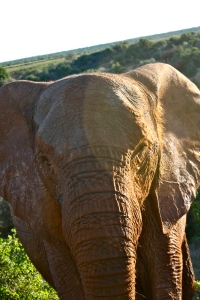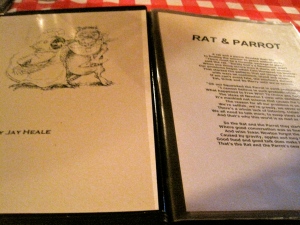Hello from South Africa! I’ve only been here for a week, but it has been a challenge to condense my experiences enough to write this post in a cohesive and intelligible manner!
My flights were fairly uneventful, although I did use the time as a chance to catch up on my pop culture and watch The Hunger Games. On the flight to Port Elizabeth I met three other American girls also heading to Rhodes for the semester, and thankfully my bags made it through the various airports unscathed.

There are 18 international students here at Rhodes for the semester, as well as a few who are returning from last semester. About half of us are from the United States, from Oregon to Boston, and the other half represents England, France, Germany, the Netherlands, Italy, and Australia. During orientation week we all lived together in one of the male residences, but this morning moved into our permanent res’s. There are two other international girls living with me in Hobson House. We have all been enjoying getting to know each other and learning about each other’s cultures; we have lots of conversations comparing our school systems, foods, and even politics. One of the European girls was very pleased to learn that I am in a sorority, and said her friends will also be excited when she tells them, as Greek life is a novelty from American movies and television!
Most of this week was basic orientation stuff, from presentations on Grahamstown’s history to meetings with various academic departments to discuss course registration. A highlight, however, was the trip to Addo Elephant National Park that was planned by Interstudy. Addo is about an hour’s drive from Grahamstown, and as we passed various game reserves we were excited to see ostriches, elephants, antelope, a rhino, and monkeys! Once in the park we were taken on a two-hour game drive, during which we had the opportunity to see many elephants, kudu, zebra, black-backed jackals, warthogs, and several types of birds. It was an amazing experience, and a great way to kick off my semester in South Africa.


Another important experience was the township tour. South Africa has the greatest inequality between the wealthy and the poor of any country in the world, so seeing both sides of Grahamstown is a necessity. The entirety of the city can be seen from the 1820‘s Settlers’ Monument overlooking the valley, and there are stark contrasts between the wealthy and poor areas. In the wealthy neighborhoods, where Rhodes is located, one regularly sees adolescents of all ages walking through town wearing the uniforms of various private schools, whereas in the township, just a few miles away, some houses are without running water and, after last weekend’s storms, even parts of their roofs. Our guide, who had us walk through areas of the township and eat a traditional Xhosa lunch, assured us that the locals would be glad to see us taking an interest in their environment, but it did feel a bit like we, as white tourists, were treating them like zoo animals.











